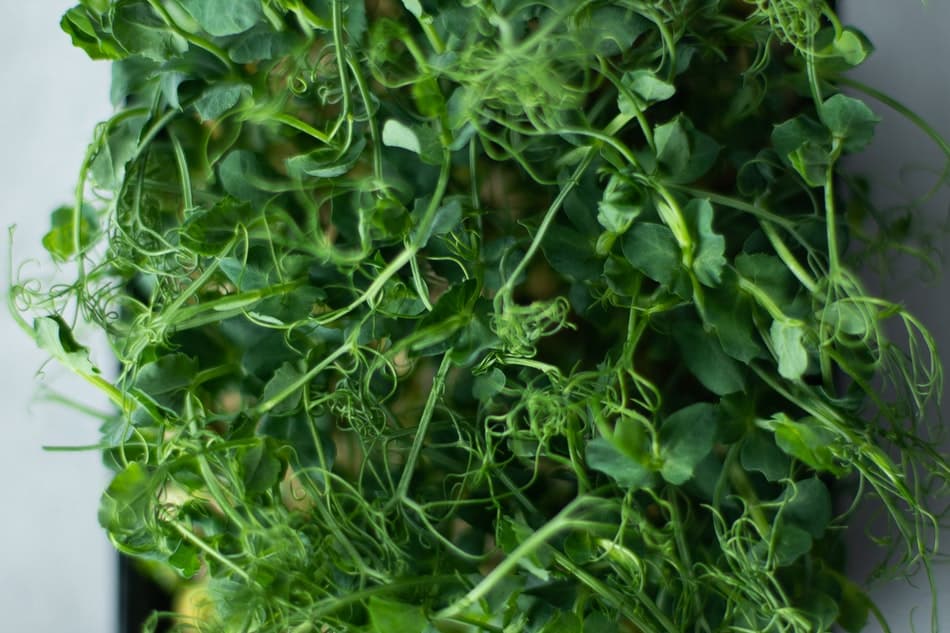Microgreens are a hot commodity right now! Are you asking the question, how much do microgreens sell for? Restaurants and chefs all over the country are using them to add flavor and color to their dishes. And what is the best way to sell them? In this article, I will answer all of your questions about microgreens’ prices and sales methods!
A typical microgreen crop can be sold for around $50 per square foot. This means that if you have a ten by ten-foot plot, you could potentially sell your entire crop for $500! Of course, this is just an estimate and your actual earnings will depend on the type of microgreens you’re growing.
What Are The Benefits Of Growing Microgreens As a Business?
If you’re looking for a unique and profitable business venture, microgreens may be the perfect option. Not only are they nutritious and delicious, but there are also many benefits to growing microgreens as a business. Here are five of the top benefits:
- One of the biggest benefits of growing microgreens is that they have a very short turnaround time. From seed to harvest, most microgreens only take about two weeks to grow. This means that you can easily grow multiple crops in a single year, which can greatly increase your profits.
- Microgreens are also relatively easy to grow. They don’t require a lot of space or special equipment, so you can get started with minimal investment. Additionally, microgreens are relatively tolerant of poor growing conditions, so even if you’re not a master gardener, you can still successfully grow a crop.
- Another benefit of microgreens is that they are extremely versatile. They can be used in a wide variety of dishes, from salads and sandwiches to soups and stir-fries. This versatility means that your customers will always have a use for your microgreens, no matter what time of year it is.
- Finally, growing microgreens is an environmentally friendly business venture. Microgreens don’t require the use of harmful pesticides or fertilizers, and they can be grown in recycled or reused containers. This makes them a great option for those who are looking to reduce their impact on the environment.

If you’re looking for a business venture that is profitable, easy to start, and environmentally friendly, microgreens may be the perfect option for you. With a short turnaround time and high versatility, microgreens offer many benefits for both growers and consumers. So why not give them a try? You might just be surprised at how successful your microgreen business can be.
What Microgreens Sell Best?
There are several factors to consider when growing microgreens for profit. In this post, I’ll discuss what microgreens sell best and how you can make the most out of your crop.
One of the most important considerations is the market you’re selling to. Are you selling to restaurants? Grocery stores? Farmers markets? Each one will have different needs and wants. For example, restaurants might be more interested in variety, while grocery stores might be more concerned with the price point.
Once you know who your target market is, you can start planning what kinds of microgreens to grow. Some varieties are more popular than others, so it’s important to do your research before making any decisions. Here are a few of the most popular varieties:
- Arugula
- Basil
- Beet
- Broccoli
- Cabbage
- Cauliflower
- Radish
These are just a few of the most popular varieties, but there are many others to choose from. The best way to figure out what sells best is to experiment and see what your customers respond to. Try growing a variety of microgreens and see which ones they buy the most. With time, you’ll be able to fine-tune your operation and maximize your profits.

What Are The Fastest Growing Microgreens?
Microgreens are becoming increasingly popular as people discover their versatility and nutritional value. But with so many different types of microgreens available, it can be hard to know which ones to grow. If you’re looking for the fastest-growing microgreens, here are a few varieties to consider:
Radish greens are some of the quickest-growing microgreens, often ready to harvest in as little as two weeks. They have a sharp flavor that works well in salads and other dishes.
Mustard greens are another fast-growing option, with a slightly spicy flavor that can add interest to your meals. They’re usually ready to harvest in three weeks or less.
Arugula is a type of mustard green that’s becoming increasingly popular as a microgreen. It has a peppery flavor that many people enjoy, and it grows quickly, often being ready to harvest in two weeks or less.
If you’re looking for fast-growing microgreens with a range of flavors, these three varieties are a good place to start. With a little care and attention, you can have fresh, nutritious microgreens to add to your meals in no time. Try growing one or more of these varieties today and see how they taste in your favorite dishes.
Kohlrabi greens are another option for those who want their microgreens quick! These leafy greens have a mild cabbage flavor and grow well indoors or out. They’ll be ready to harvest in as little as two weeks.
Swiss chard is another fast-growing microgreen that can be ready to eat in three weeks or less. This leafy green has a slightly sweet flavor and is a good source of vitamins A and C.
If you’re looking for a fast-growing microgreen with a bit of spice, consider radish greens. These peppery greens are ready to harvest in just two weeks and make a great addition to salads and other dishes.
How Long Do Microgreens Last After Harvest?
Microgreens can last up to a week after they are harvested. However, the shelf life of microgreens depends on how they are stored. If microgreens are stored in an airtight container, they will last longer. Microgreens can also be frozen, which will extend their shelf life. The best way to store microgreens is to keep them in a cool, dark place.
When it comes to storing microgreens, there are a few things you should keep in mind. First, make sure that the container you use is airtight. This will help to keep the greens fresh for longer. Second, if you are going to freeze your microgreens, make sure that you do so as soon as possible after harvest. This will help to preserve their nutrients.
Final Words
The bottom line is that microgreens are a great way to make some extra money. They are relatively easy to grow and can be sold for a decent price. If you have the space and the time, then growing microgreens is something you should consider. Who knows, you may even end up making a career out of it! Thanks for reading and good luck!
Related Articles

